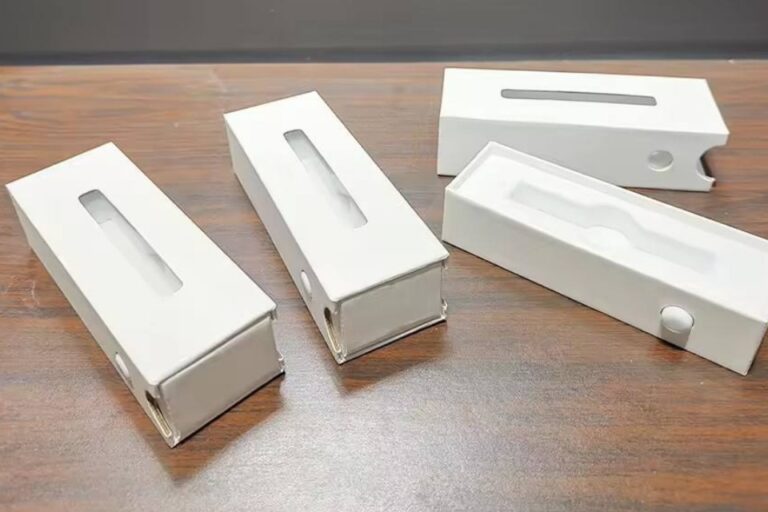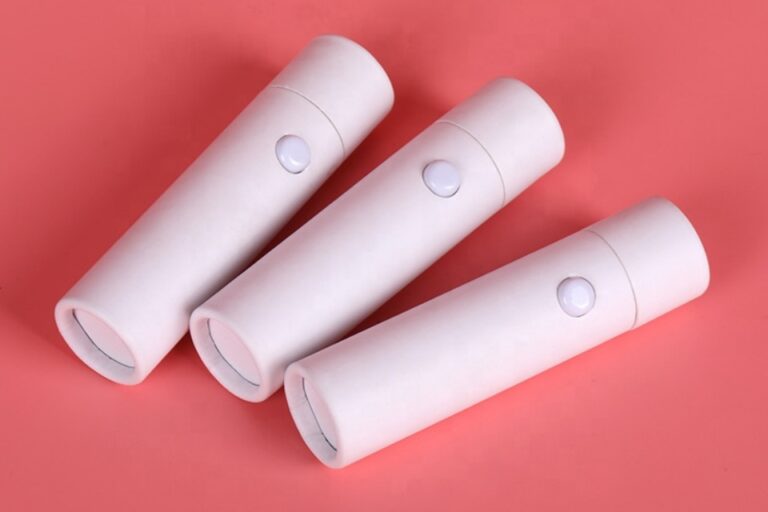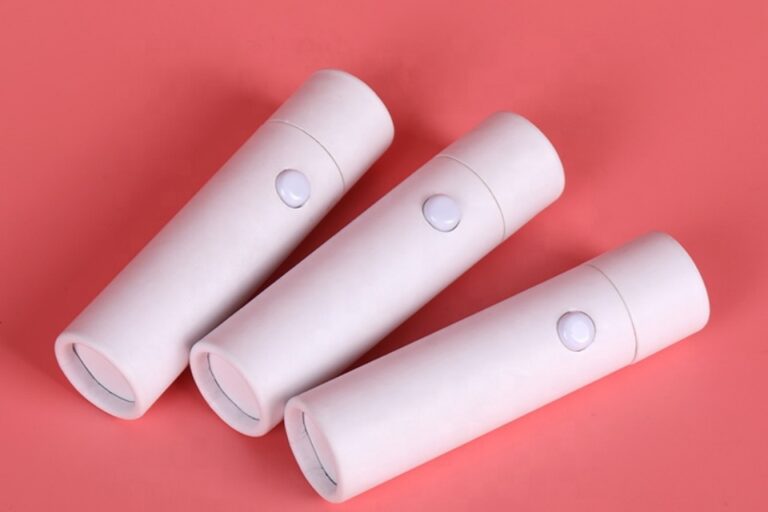-
Gushu Industrial Zone Xixiang Street, Bao'an District, Shenzhen
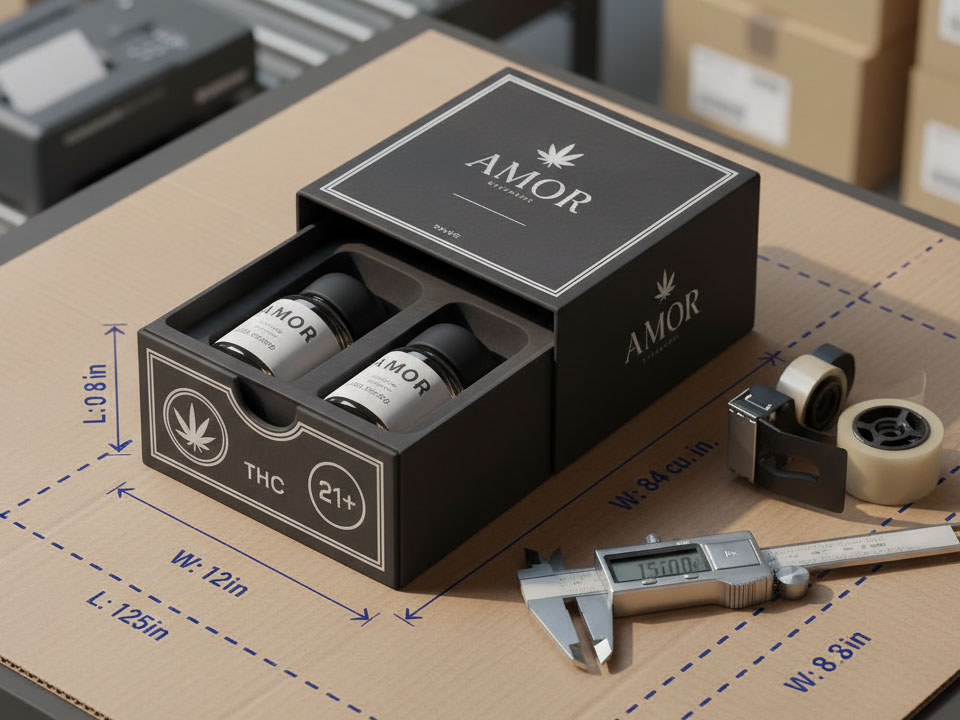
Guide to Optimizing Packaging Dimensions for Shipping Efficiency
Imagine a scenario: you’ve designed a sleek jar for your product. It fits into a box, you drop in some bubble wrap, it ships. Easy, right? But at scale, that “easy” approach hides inefficiencies.
Let’s get beyond bullet points and spreadsheets—this is about marrying engineering, human empathy, and logistics to make every inch count.
Table of Contents
The Hidden Cost of “Just Enough Space”
Imagine a scenario: you’ve designed a sleek jar for your product. It fits into a box, you drop in some bubble wrap, it ships. Easy, right? But at scale, that “easy” approach hides inefficiencies. Every millimeter of unused space is money—air to pay for, material to waste, carbon footprint to bloat.
Shipping carriers don’t care how beautiful your jar is. They care about the volume it occupies. Once your box crosses a dimensional-weight threshold, they’ll bill you as though it were heavier than it is. And that’s where most brands bleed margin.
What we want is a packaging ecosystem—not a single ideal box—that adapts to your product palette, your damage tolerance, and your growth trajectory. Visit our homepage to explore complete sustainable packaging solutions that go beyond design.

Chapter 1: Empathy With the Package
Before optimizing size, treat your product like a fragile friend. Ask:
- What are its weak points? Corners, joints, lids, screens?
- What forces will it face? Compression, shock, vibration, stacking.
- What’s acceptable failure? A cracked lid? Cosmetic scuff? Full replacement?
That empathy forces you to preserve safety margin. But once that margin is known, you can push everything else tighter around it. You’re not designing “the smallest box possible”—you’re designing “the smallest safe box.”
You’ll see this principle at work in our paper tube packaging, which keeps cannabis products protected and visually elevated while using minimal excess material.
Chapter 2: The Geometry of Wasted Space
Let’s peer under the hood. Consider the box as a 3D lattice. Void volume exists where the product doesn’t touch walls or fill corners. That void is air you pay to ship, and foam you pay to fill.
Key ideas:
- Corner trimming vs. shape matching Sometimes rounding a box corner or beveling edges allows tighter nesting with neighboring boxes on pallets.
- Multi-orientation packing A product might fit snugly when rotated 90°, but many packers always orient it the same way. Experiment with orientation equivalence to eliminate “dead volume.”
- Voxel-level packing simulation For complex SKUs, imagine your product as a cloud of 3D voxels (tiny cubes). Simulate which ones are essential for protection and which ones you can shave off. This is how high-end packaging designers get those centimeter-level savings.
- Variable-height lids or telescopic boxes If your product’s height fluctuates (e.g. movable parts), a telescoping lid adjusts to minimize air above.
We apply this science in our concentrate container packaging, balancing snug geometry with protective foam or EVA inserts.
Chapter 3: The Clustering Paradox & SKU Strategy
You have 100 SKUs. You could make 100 boxes. But then:
- Inventory complexity explodes
- Purchasing costs lose scale
- Packager confusion arises
Better: find your “packing clusters.” Group SKUs that share dimension profiles and protection levels. But don’t rigidly match cluster → box. Instead:
- Create a core template box for each cluster
- Allow slight “variance padding” (± a few millimeters)
- Use modular inserts or shims for final adjustment
This reduces SKU count while preserving dimensional tightness.
Also: leave one “flex” box size per cluster that acts as a buffer when products evolve or packaging tolerances shift.
For example, our child-resistant rigid paper drawer gift box demonstrates how one structure can be adapted to different product families while maintaining strict safety standards.
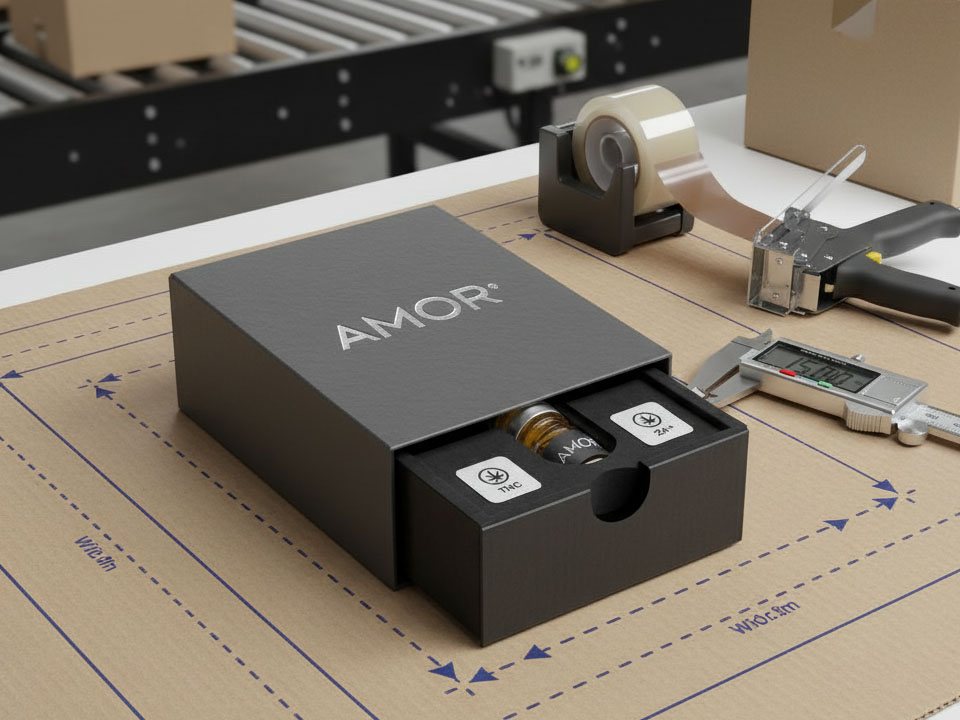
Chapter 4: Experimenting Like a Scientist
Your packaging line is a lab. Approach it like experiments:
- Hypothesize E.g. “Reducing height by 5 mm will save enough DIM cost to justify the change.”
- Prototype & instrument Build physical versions. Add sensors or markers to log stress points, strain angles, and impact spots.
- Run A/B trials Ship half your SKUs in old packaging, half in new. Monitor shipping cost, damage rates, customer returns, dissatisfaction notes.
- Statistical analysis Don’t accept superficial averages—run significance tests. Maybe the new box saves cost but increases damage marginally for heavier SKUs; maybe only works for light ones. Segment your results.
- Iterate & refine Based on data, you may slightly nudge dimensions, change insert stiffness, or adjust layering.
This same scientific method led to improved efficiency in vape cartridge packaging, where millimeter-level adjustments reduced material waste by 10%.
Chapter 5: Tactics & Advanced Moves
- Hybrid Material Zones Use stronger, denser board only where stress is highest (corners, edges), and lighter board elsewhere.
- Asymmetric padding Your product might not be centered—padding more on one side can allow you to shave a millimeter on the other.
- Interlocking packs for multipacks Design internal geometry so multiple units interlock, reducing required wrapper space.
- Scanned-fit packaging At pack time, scan the product and have a machine adjust the box dimensions or internal insert in real time (used in some advanced warehouses).
- Return reuse strategy In some models, send the “shell” of your box back for reuse. Optimizing both outbound and inbound volumes is powerful.
These techniques are crucial for designing optimized pre-roll packaging that maintains product integrity while scaling cost-effectively.
Chapter 6: KPIs That Matter (But Few Use)
- Void volume reduction curve over time (not just average)
- Damage cost per unit volume saved (is your saving worth the risk?)
- Complexity slope: How many new SKUs before your box library becomes unmanageable
- Packing time delta: A tighter box that slows packers erodes margin
- Cross-tier jump rate: % of packages that hop into the next DIM weight class
- Space efficiency on pallets and trucks (how many units per square foot)
Final Reflection: The Philosophy of Packaging
Optimizing packaging dimensions is part engineering, part art, part empathy. When you do it well:
- Your margins expand
- Your sustainability improves
- Your brand feels intentional
This mindset drives our work at Cheap Cannabis Packaging, where we merge protection, design, and precision engineering. From custom magnetic closure concentrate boxes to child-safe rigid drawers and recyclable tubes, every product is designed to minimize waste while maximizing brand impact.
Comments
ASTM D3475 Bulk Wholesale Packaging cannabis branding cannabis packaging cannabis packaging compliance cannabis packaging wholesale Cheap Cannabis Packaging child-resistant child-resistant packaging child resistant cannabis packaging child resistant packaging child resistant pre roll boxes child resistant pre roll packaging child resistant vape packaging China packaging manufacturer Concentrate Container Packaging custom cannabis packaging custom pre roll boxes custom vape boxes eco friendly packaging ISO 8317 magnetic closure box marijuana packaging OEM/ODM OEM/ODM cannabis packaging OEM/ODM Wholesale OEM ODM Cannabis Packaging OEM ODM Packaging paper tube packaging PPPA 16 CFR 1700 pre-roll packaging Pre Roll Multipack Boxes Pre Roll Packaging sustainable cannabis packaging Sustainable Packaging Sustainable Vape Packaging tamper-evident Tamper-Evident Packaging Vape Cartridge Boxes vape cartridge packaging wholesale cannabis packaging Zhibang Zhibang cannabis packaging Zhibang China factory Zhibang packaging

